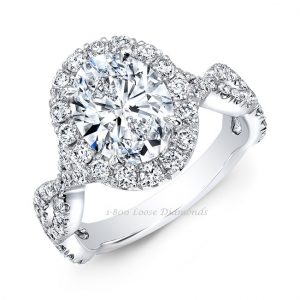GIA Certified
How do GIA Certified Diamonds impact the value of the diamond? What does the color, the clarity, the cut, and carat weight have to do with the value of a gia certified diamond? While the Gemological Institute of America (GIA) was designing and implementing the D-Z diamond grading system in the early 1950' s many polished diamond dealers asked how do GIA certified diamonds impact diamond value. What impact did these letter grades have on determining the value of their inventories?
Beny Sofer of Beny Sofer Inc., explains that "we had samples that we submitted to GIA, we had .70, .80, .90 pointers; we couldn't afford bigger. This was maybe in 1974 or '75. We would compare these to our samples stones. This is how you do it. You look at the stone, count one, two, three, then put the stone on the other side of the sample, count one, two, three, then make a decision. If you look at it for too long, if you start switching stones, you will have a whole lot of confusion." Sofer goes on to explain, "with each eye, you see differently-the right and left sides-so you take the in-between medium. There were three categories: white, commercial and top silver, which referred to yellow stones. White with blue-white. Commercial was the widest, but not blue white. The new system made it easier."
GIA Certified Method
Many diamond dealers were quick to adopt the new method of evaluating diamonds because it set a standard in which all diamond dealers could adhere to. One such jeweler, Sheldon Kwiat in New York City, recalls when his family firm switched to the new standard of GIA certified diamond grading system, the D-Z color criteria, "what the GIA system has given us in a common language. It's very effective when discussing the color of a stone over the phone or in an email. The GIA system is very consistent as long as someone is using the terms in the right way. Years ago, the retailer had to rely on his suppliers understanding of diamonds for the difference between G and H. With a standardized grading system, retailers no longer have to rely on their suppliers' knowledge."
GIA Certified Master Diamond Set
In order to consistently and correctly interpret diamonds, GIA attempted to resolve a major lingering issue with regards to grading a diamond's color. The issue being the correct lighting environment for grading GIA certified diamonds. One of the first changes implemented by the GIA certified grading system was to get away from vague and inconsistent standards. The demand for consistency when reading diamonds was paramount to GIA's goal of providing a standardized system for grading. The Gemological Institute of America spent countless hours refining and perfecting the viewing environment and lights used to create the most consistent grading situation possible.
Lighting Factors and GIA Certified Diamonds
Even the useful life of the lamps had to be factored into the equations as fluorescent light bulbs tend to dim before burning out. GIA determined that useful life of a fluorescent bulb was 1800 hrs. In 1941, George M. Shipley and Richard Liddicoat introduced the GIA colorimeter, a visual color comparison instrument, a color scale that represented grade categories, a standardized light and viewing environment.
In addition to consistent lighting, GIA grading system's consistency is highly dependent on the use of a master set of diamonds. A master set of GIA diamonds are diamonds that are located at the highest point in their respective grade range. For example, a diamond equal to the G color master is graded as a G color. If the diamond has slightly less color, it would receive a grade of F color. A diamond with more color than the G color master diamond and less than the age master color would receive a grade of G color.
Diamonds with more color than the Y-Z color range are graded face up as fancy color diamonds. Diamond dealer Sheldon Kwiat explains, "we select certain diamonds that are at key points on the grading scale. We have nine round diamonds ranging from a low D- borderline D-E- down to a low L-borderline L-M. the vast majority of diamonds that we send to GIA, we are in agreement on.
GIA Certified and Lighting
Within a grading system, you always run into issues of borderline color. Diamonds don't come in finite colors; they come in a continuum of colors. For those that fall on the borderline, by and large, GIA does a very good job."
Attempting to resolve issues with regards to borderline colors for GIA certified diamonds. In the 1970s attempted to apply to letters to the same diamond such as E-F color or G-H color. However, this grading criteria did not hold up in the long-term. Tom Moses of GIA maintains, "we did range grading. In some ways, it's easier but you cannot turn back the range grading today. There is a degree of tolerances in judgment.
There are still going to be boundary issues. Bill Boyajian, the former president of GIA says, "the best way to lessen the problem is to be sure the master that's themselves are consistent." In reference to the "master master" set that resides in a safe at the GIA in California. Furthermore, Bill Boyajian says, "all the other sets in the labs have been made off that set. Master sets used by other labs likewise have been graded against the master set of GIA." Clearly, the GIA grade impact diamond value.
Bill Boyajian, the former president of GIA says. "The best way to lessen the problem is to be sure the master that's themselves are consistent."
In reference to the "master master" set that resides in a safe at the GIA in California.
Clearly, GIA certified diamonds impact their value.
http://www.diamonds.net/News/NewsItem.aspx?ArticleID=26330
The Four C’s of Diamonds Made Easy
http://www.agslab.com/education-diamond-color-grade.php

Modern Style Twisted Shank Diamond Halo Ring shown with a 2 carat GIA certified oval diamond.